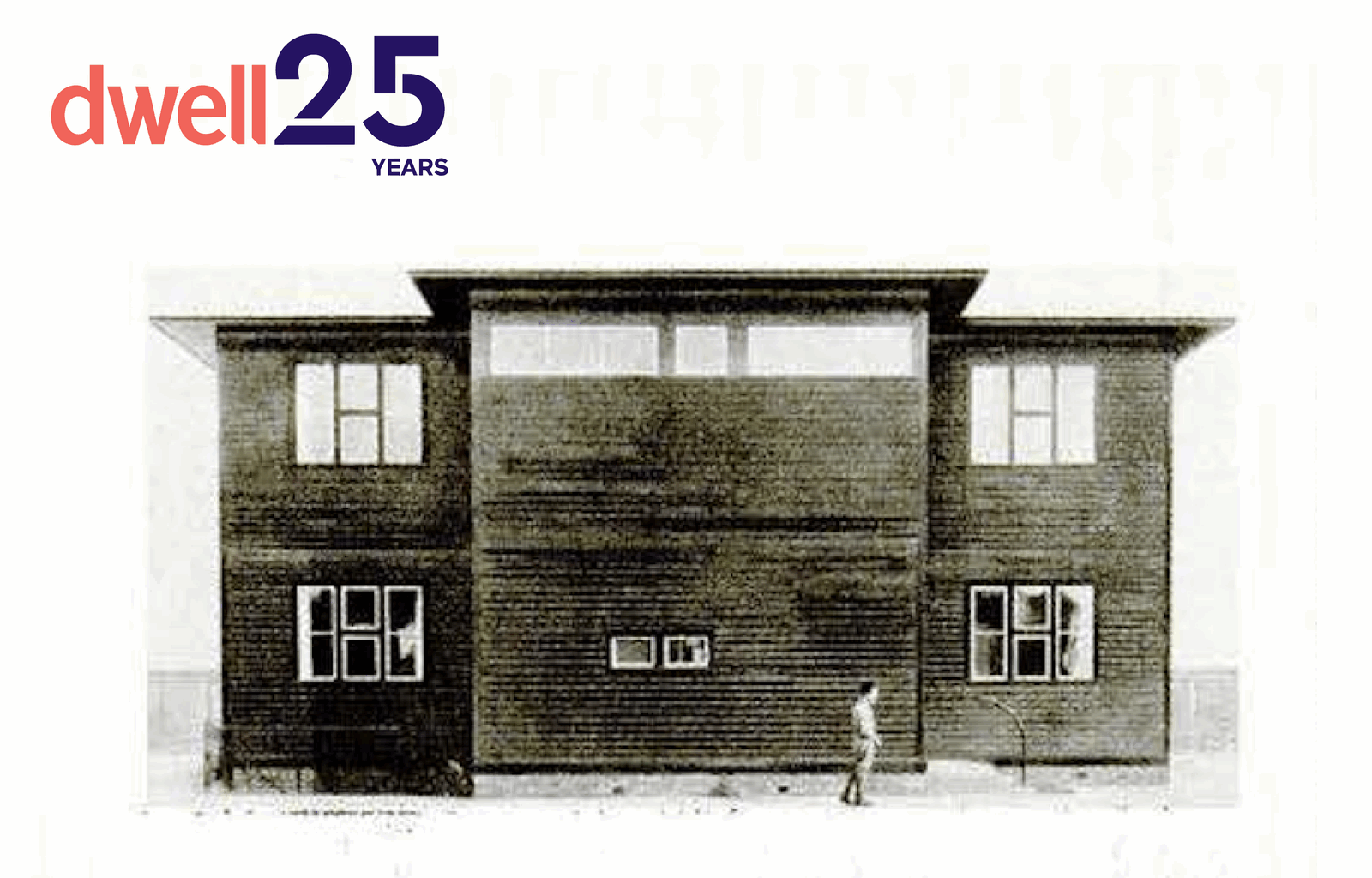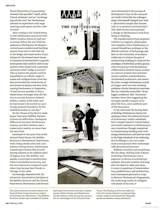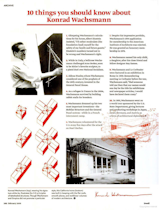As a part of our 25th-anniversary celebration, we’re republishing formative magazine stories from before our website launched. This story previously appeared in Dwell’s February 2009 issue.
References to the émigré architect, engineer, thinker, and teacher Konrad Wachsmann are redolent of hyperbole. John Entenza, instigator of the Case Study Houses, captured Wachsmann’s character in mythical terms in his introduction to a 1966 lecture given by the architect: “And so I bring you this old friend, this aging wunderkind, this concoction, this mixture of Loki and Apollonius of Tyana—this Konrad Wachsmann.”
By then, Wachsmann had transformed himself from an inauspicious beginning as a high school dropout into a renowned thinker and holder of more than 100 patents. Like many prominent American architects of the period, Wachsmann emigrated from Germany, where he was born in 1901. After training as a carpenter, he apprenticed with architects Hans Poelzig and Heinrich Tessenow. These experiences ended badly when Wachsmann quit abruptly to embark on what would become a single-minded quest: “I wanted to build, and I wanted to build in the modern way.”
In 1926 he found himself working at Christoph & Unmack, a maker of prefabricated wood buildings in the rural Niesky, Germany. There he expected to “drink milk, eat meat, and find tranquility,” but the company proved to be sufficiently more urbane than he had anticipated. “Full of distress, I had recently sought my way in Paris,” Wachsmann recalled. “Here, in the middle of the country [Niesky], I found its first traces. The world of machines, of technology, the beginning of industrial building opened up to me in the wooden halls of this factory.”
The firm, which was affiliated with a sect involved in missionary work, had exported prefabricated buildings worldwide since the 1880s. Projects like a 1926 hotel on the island of Curaçao, built in Niesky from Christoph & Unmack’s patented panels, transformed Wachsmann’s early thinking.
Another break came in 1929, when he won the commission to design Albert Einstein’s house near Berlin. Charisma and self-confidence—and the jet-black suits and stark white ties that were his trademark—helped him secure this high-profile project. Wachsmann juxtaposed a cubic volume and a hipped roof in a rather literal illustration of compromise: Einstein had specified “small, white French windows” and an “overhanging red tile roof,” but Wachsmann yearned to experiment with large openings, wide spans, and flat roofs in wood.
After coming to the United States in 1941, Wachsmann partnered with Walter Gropius, whom he had met in Europe before the war. With his assistance, Wachsmann developed a revolutionary prefabricated building system from 1941 to 1952 that led to the design and construction of prototypes for the General Panel House. It consisted of standardized composite wood panels that could be used in any position when joined with a patented universal metal “wedge connector.” Like an Erector Set, panels could be assembled in an infinite range of scales and configurations. Great fanfare surrounded the construction of test houses in Boston and New York, causing Wachsmann to rhapsodize, “It had become possible to ship a whole house overnight from the factory to any site, however isolated, within a radius of 300 miles, and for that house to be erected on a previously prepared foundation by five unskilled workers in one day.”
Yet the “dream of the factory-made house” was never fulfilled. Because of financial difficulties; ideological differences between Wachsmann, Gropius, and their backers; and a conservative market, no more than 150 were built.
Developed at the same time as his General Panel House, the Mobilar Structure is Wachsmann’s best-known work. Using tubular steel and a proprietary joining system, Wachsmann created space frames that formed soaring volumes in the sublime spirit of bygone eras. The Mobilar was similar in principle to Buckminster Fuller’s tetrahedral structures, and the two visionaries compared notes when they became fast friends in Chicago in the 1950s.
Increasingly obsessed with the connectors that served as linchpins to the Mobilar Structure and the General Panel House, Wachsmann had become more interested in the process of development than in the end product itself. Critics like his colleague Serge Chermayeff charged him with a “panaceatic myopia that focuses only on a mythical universal joint.” This shift further demonstrated a change in Wachsmann’s work from doing to thinking.
The transformation from carpenter-architect to engineer-philosopher was complete when Wachsmann recreated himself as a professor at the Illinois Institute of Technology and later at the University of Southern California. To achieve his goal of modernizing building, he replaced the paradigm of individual artistic genius with anonymous interdisciplinary collaboration. Student teams worked on contract projects that involved system analysis, standardization, mechanized production, and assembly. Soon enough Wachsmann would no longer need concrete building problems. Purely theoretical exercises like his infinitely extensible “three-legged, wishbone-like” structural member from 1953, suggesting the strangely spindly carapace of an alien life form, were suddenly part of the discussion.
In his 1959 book The Turning Point of Building, Wachsmann shares his epiphany about the industrial future of architecture: Gothic cathedrals led to Joseph Paxton’s Crystal Palace and would culminate in Wachsmann’s own inventions. Though committed to transforming building with technology, Wachsmann still held his work to the high standards of art, believing that buildings in the new mode must communicate their technologically determined essences.
Brilliant, inventive, and recalcitrant, like the shape-shifting Loki of Norse mythology, Wachsmann was a superstar to droves of architecture students. His work remains vital long after his death in 1980, and when it comes to questions of industrialization, prefabrication, and architecture, each subsequent generation is apt to discover Wachsmann’s fingerprints, the undersung marks of a designer well ahead of his time.



